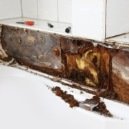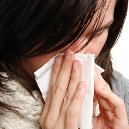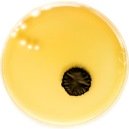Find a pre-screened local mold removal specialist Free Estimate
Find a Mold Specialist Now
Click or Call, Toll-Free 24/7
Dental Issues from
Indoor Mold Exposure
Dental issues from indoor mold exposure really do occur. When we hear about people suffering from bleeding or swollen gums it would be assumed that they were people who practiced poor dental care. This is not always the case. Did you know exposure to mold can cause dental issues? Most people know that mold can cause health problems like coughing, sneezing and even pneumonia, but when faced with some of the more common dental issues they mistakenly think they just aren’t caring for their teeth properly.
While more and more physicians are becoming aware of the impact mold can have on a patients’ health and may ask patients displaying symptoms of mold-related illness about possible mold exposure, dentists often do not consider the fact that mold in the home could be contributing to their patients’ oral health issues. It’s important for dentists to be aware of all the potential health problems indoor mold exposure can cause, including those related to oral health, in order to make sure you receive the treatment you need.
How Does Mold Affect the Teeth and Gums?
Mold reproduces by means of microscopic spores, too small to see with the naked eye. Inhalation of these spores causes the respiratory problems commonly associated with mold. Mold spores are also responsible for some of the dental issues related to mold exposure.
According to the Cleveland Clinic, mold spores can become lodged in mucus membranes, the delicate linings of the nose, mouth, throat and sinuses. Mold spores irritate the mucus membranes and can cause a burning sensation, which may lead to bleeding of the gums.
Some types of mold produce toxic substances called mycotoxins. Exposure to mycotoxins causes additional health problems beyond those triggered by inhalation of mold spores. It’s the mycotoxins produced by stachybotrys chartarum, commonly referred to as the infamous "Black Mold," that makes this strain of mold so hazardous. Some mycotoxins can cause the mucus membranes to bleed, triggering nosebleeds and gums that bleed easily.
And remember those respiratory problems commonly associated with mold? If your nose is stuffed up, causing you to breathe through your mouth, that can be bad for your teeth. That’s because breathing through your mouth dries out your mouth and decreases the production of saliva. Saliva helps wash away food particles and neutralizes acid in the mouth, so without adequate saliva, tooth decay and cavities may result. A dry mouth can also lead to gum disease and be the cause of bad breath.
Of course, good oral hygiene can help. Brush and floss your teeth daily and limit your sugar intake. Basic oral hygiene won’t be enough to prevent mold-related dental issues, however.
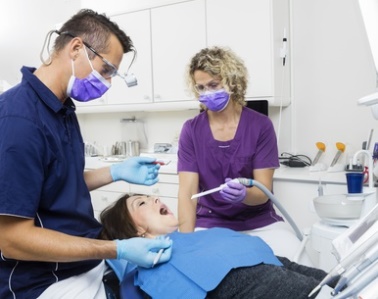
Addressing Mold-Related Dental Problems
The first thing you need to do is to get out of moldy environments. Whether the environment is your home or your workplace, stop exposing yourself to mold by staying away from the area.
Do whatever is necessary to rid the places you live or work in of any mold contamination. It is important to remember that if the mold is in your home and you are considering doing the cleanup yourself, you should consult with your physician first to be sure it is safe. The cleanup process stirs up the mold, and causes additional exposure.
If you are having any issues with your mouth or gums, see a dentist to discuss the issues. Make sure you inform them about any moldy conditions that you have been exposed to.
If you have a fungal infection of any kind, it is important that in addition to seeking professional medical help, you can begin treating the fungus by avoiding certain foods and drinks. Try to avoid foods that contain a high Glycemic Index; foods like white breads, white rice, pretzels, and breakfast cereals that contain a lot of sugar. Also avoid fruit juices, fizzy drinks and alcohol. Certain dried fruits such as pineapple also contain lots of sugar and should be avoided. If mold is present inside your body, try not to feed it what it needs to survive. The mold's growth will slow down, and then it can potentially be more easily eliminated from the body.
Prevention for Dental Issues
You should see a dentist every six months for an examination and dental cleaning. If you notice any problems between routine visits, such as bleeding gums, increased sensitivity or pain, make an appointment. If you’re suffering from gum disease, your dentist may refer you to a periodontist, a dentist that specializes in the gums. Let your dentist know about any other symptoms you may be experiencing and if you’ve been exposed to mold at home.
If you are experiencing other symptoms of mold-related illness, such as coughing, sneezing, headaches, a sore throat, or a rash or hives, see your primary care physician. You can read more about other symptoms of mold-related health problems here. Make sure you tell your doctor about any dental issues you are experiencing along with your other symptoms.
Mold Removal
In addition to getting the medical and dental treatment you need, you must arrange to have the mold removed from your environment in order to prevent further harmful exposure. The U.S. Environmental Protection Agency (EPA) recommends consulting your physician before attempting to remove mold yourself if you are experiencing mold-related health problems. The process of removing mold stirs up mold spores and further exposes you to the spores and mycotoxins that are making you sick. Whether you want to hire someone to do the work for you or plan to do it yourself, you can schedule a free consultation with a mold removal professional to get more information about the cleanup process. Just follow this link to find experienced professionals in your area that are offering free home inspections and consultations.
Return From Dental Issues To Our Main Symptoms Page
Free Home Inspection By A Mold Removal Specialist
Search This Website
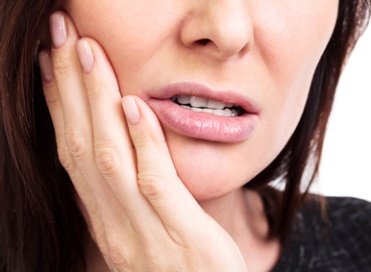
Recent Articles
-
See Our 5 Recommended Mold Removal Companies in Covington, KY
Apr 16, 25 12:59 PM
-
See Our 5 Recommended Mold Removal Companies in Wheaton, IL
Jun 20, 24 10:33 AM
-
See Our 5 Recommended Mold Removal Companies in Aberdeen, SD
Oct 08, 21 04:05 PM
